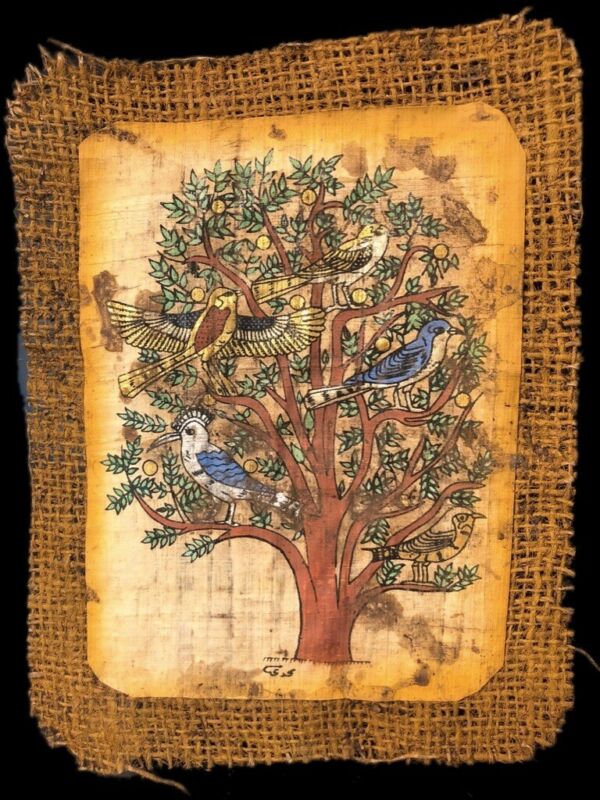

They must have been making mats out of plant stocks for a long time. With the only material for writing (stone, clay and wax) being so difficult to store and transport, it was probably a case of "necessity is the mother of invention." I would guess that the procedure may have been fairly easy.
#PAPYRUS PAPER EGYPT TRIAL#
I wonder how much trial and error the Egyptian inventive mind went through to come up with the idea of making a thin paper to write on. I've noticed that restaurants use a type of paper that also looks distressed, seemingly to add character to their menus. The font has a flourish and 'distressed' look to it.

It must come from what print looked like on this type of paper. I had always loved the font entitled papyrus, but I never knew where the name came from. I've also used papyrus style paper for my resumes, to add some distinction to it! Stationary stores may carry papyrus stationery. I agree, this type of paper does add character to a note or menu.
#PAPYRUS PAPER EGYPT DOWNLOAD#
They will also have an understanding of what Hieroglyphics are and will be able to use them.Īll activity sheets and supporting resources are free to download and are fully editable, so you can tailor them to your students’ and your schools’ needs.Īnd please do share your learning highlights and final creations with us on social media or send them via email to to be featured in our online gallery.9 hours - The paper that looks like papyrus is actually called just that, papyrus stationery! I love its look and feel. Suggested learning outcomesĪfter completing this activity students will have an understanding of what Papyrus is and will be able to make a version of it. Some signs were symbolic and stood for whole words, while others were phonetic and stood for sounds. All scribes had to undergo years of rigorous training as Hieroglyphics was quite complicated, including around 700 different signs of objects and animals. The ancient Egyptians who were responsible for writing were called scribes. The ancient Egyptians also used papyrus to make boats, mattresses, mats, rope sandals and baskets. These reeds could reach heights of about sixteen feet! Papyrus had many uses. It was made from a reed called Cyperus Papyrus that was grown around the river Nile. The Ancient Egyptiansįirst used in around 2900 BC, papyrus is a kind of paper that was used in Ancient Egypt for the purposes of writing. Modern paper uses fibres from another type of plant to make paper – wood. However, it should be noted that time is needed for the papyrus to soak up the sugar water and to dry out fully (overnight ideally).Īpart from a writing material, ancient Egyptians employed papyrus in the construction of other artefacts, such as reed boats, mats, rope, sandals and baskets. The activity will take approximately 1 hour. This activity involves making stimulated ‘papyrus’ from paper. This resource is based on Ancient Egyptian use of Papyrus, an early type of paper made from crushed reeds. This is one of a set of resources designed to allow learners to use practical methods to support the delivery of key topics within design and technology, history and art. It could also be used in conjunction with the other activities in this theme, ‘ Write like an Egyptian’, to write authentic hieroglyphics, and ‘ Count like an Egyptian’. This free resource is aimed at primary school children and could be used as a main lesson activity, to teach learners about the works of the ancient Egyptians contributing to learning in design and technology, art and history or as a precursor to investigating how paper is made in design and technology.
#PAPYRUS PAPER EGYPT HOW TO#
They will learn how to create the paper using a weaving technique, using a natural glue similar to that created by the reeds.


In this fun STEM activity for kids, students will discover the one method of making papyrus and how it was made in Ancient Egypt.


 0 kommentar(er)
0 kommentar(er)
